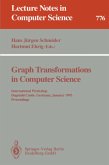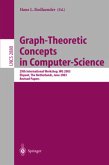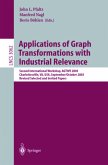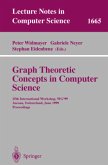This book constitutes the refereed proceedings of the Second International Conference on Graph Transformation, ICGT 2004, held in Rome, Italy, in September/October 2004.
The 26 revised full papers presented together with three invited contributions and summaries of 2 tutorials and 5 workshops were carefully reviewed and selected from 58 submissions. The papers are organized in topical sections on integration technology, chemistry and biology, graph transformation concepts, DPO theory for high-level structures, analysis and testing, graph theory and algorithms, application conditions and logic, transformation of special structures, and object-orientation.
ICGT 2004 was the 2nd International Conference on Graph Transformation, following the ?rst one in Barcelona (2002), and a series of six international workshops on graph grammars with applications in computer science between 1978 and 1998. ICGT 2004 was held in Rome (Italy), Sept. 29 Oct. 1, 2004 under the auspices of the European Association for Theoretical Computer S- ence (EATCS), the European Association of Software Science and Technology (EASST), and the IFIP WG 1.3, Foundations of Systems Speci?cation. The scope of the conference concerned graphical structures of various kinds (like graphs, diagrams, visual sentences and others) that are useful when - scribing complex structures and systems in a direct and intuitive way. These structures are often augmented with formalisms that add to the static descr- tion a further dimension, allowing for the modelling of the evolution of systems via all kinds of transformations of such graphical structures. The ?eld of graph transformation is concerned with the theory, applications, and implementation issues of such formalisms. The theory is strongly related to areas such as graph theory and graph - gorithms, formal language and parsing theory, the theory of concurrent and distributed systems, formal speci?cation and veri?cation, logic, and semantics. The application areas include all those ?elds of computer science, information processing,engineering,andthe naturalsciences wherestatic anddynamicm- elling using graphical structures and graph transformations, respectively, play important roles. In many of these areas tools based on graph transformation technology have been implemented and used.
Hinweis: Dieser Artikel kann nur an eine deutsche Lieferadresse ausgeliefert werden.
The 26 revised full papers presented together with three invited contributions and summaries of 2 tutorials and 5 workshops were carefully reviewed and selected from 58 submissions. The papers are organized in topical sections on integration technology, chemistry and biology, graph transformation concepts, DPO theory for high-level structures, analysis and testing, graph theory and algorithms, application conditions and logic, transformation of special structures, and object-orientation.
ICGT 2004 was the 2nd International Conference on Graph Transformation, following the ?rst one in Barcelona (2002), and a series of six international workshops on graph grammars with applications in computer science between 1978 and 1998. ICGT 2004 was held in Rome (Italy), Sept. 29 Oct. 1, 2004 under the auspices of the European Association for Theoretical Computer S- ence (EATCS), the European Association of Software Science and Technology (EASST), and the IFIP WG 1.3, Foundations of Systems Speci?cation. The scope of the conference concerned graphical structures of various kinds (like graphs, diagrams, visual sentences and others) that are useful when - scribing complex structures and systems in a direct and intuitive way. These structures are often augmented with formalisms that add to the static descr- tion a further dimension, allowing for the modelling of the evolution of systems via all kinds of transformations of such graphical structures. The ?eld of graph transformation is concerned with the theory, applications, and implementation issues of such formalisms. The theory is strongly related to areas such as graph theory and graph - gorithms, formal language and parsing theory, the theory of concurrent and distributed systems, formal speci?cation and veri?cation, logic, and semantics. The application areas include all those ?elds of computer science, information processing,engineering,andthe naturalsciences wherestatic anddynamicm- elling using graphical structures and graph transformations, respectively, play important roles. In many of these areas tools based on graph transformation technology have been implemented and used.
Hinweis: Dieser Artikel kann nur an eine deutsche Lieferadresse ausgeliefert werden.









